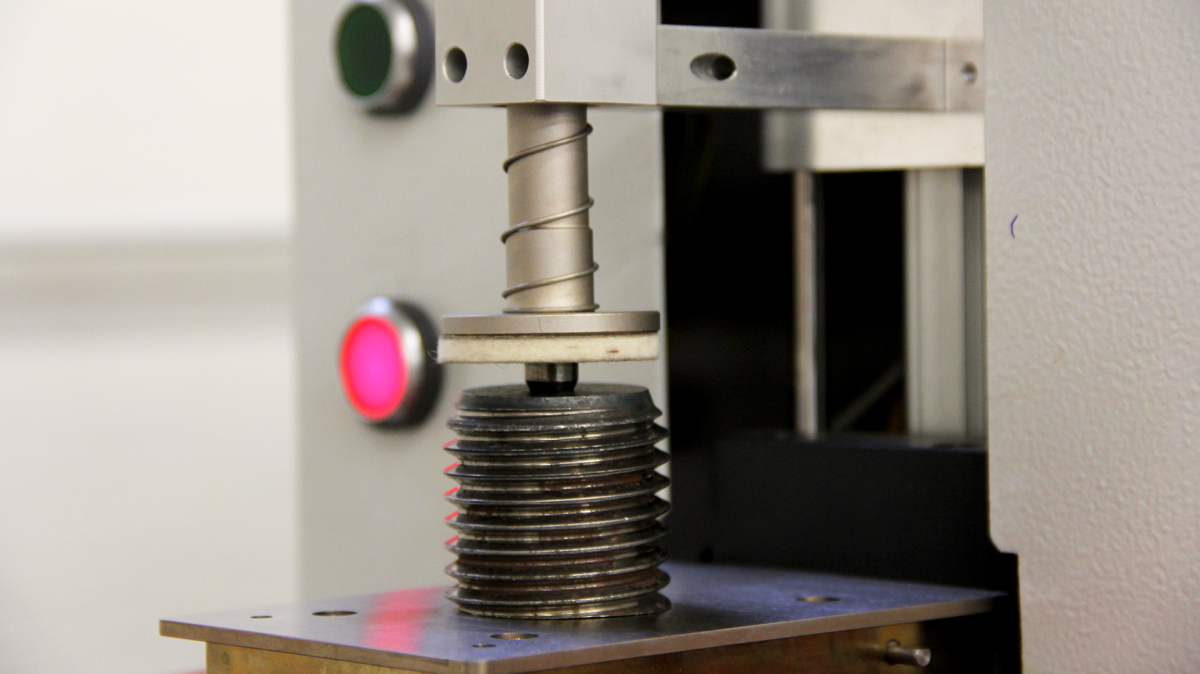Material analysis: Until the sparks fly
In our vacuum spark emission spectrometer, the sample is excited using high-frequency voltage. The emitted light is then analyzed inside the device and evaluated in the software for the chemical elements detected and their mass fractions.
For material analysis, it is usually necessary to prepare the test surfaces of the sample before testing. The test surface is roughly ground with silicon carbide abrasive paper, thoroughly cleaned under running water and then dried without leaving any residue. This ensures reliable results.
For the test, the sample is placed between two electrodes including an air gap to the counter electrode. The test space under the sample is flooded with argon to avoid falsification of results due to the influence of oxygen. The sample is then excited locally using a high-frequency voltage. At the transition of the electrical voltage on the sample surface, a small part of the test surface is vaporized and brought into the state of a light-emitting plasma. The different wavelengths of light are then analyzed and evaluated in the device. The result is a table showing the chemical composition of the metal with mass fractions of the alloying elements. This data can then be compared with the standardized composition of the target material, for example.
Your benefits
- Various measurement programs for different types of steel ensure precise measurements
- Extensive database with target compositions of metallic materials, especially for steel grades
- Reliable measurements using certified reference material
The Würth Industrie Service GmbH & Co. KG collects and processes the personal data provided in the form in order to process the requested request for you. Please note the mandatory fields in the forms. The legal basis for this processing, the absolutely necessary data, is Art. 6 para. 1 lit. b DSGVO, implementation of a pre-contractual measure. The processing of data voluntarily provided by you is carried out on the basis of Art. 6 para. 1 lit. f DSGVO. Thereafter, processing is permissible which is necessary to safeguard our legitimate interests. Our legitimate interest is to have contact with you, our customers, to improve our consulting quality and to be able to contact you more easily in case of possible queries. The data collected will only be stored by us for as long as is necessary to process your enquiry and to contact you. They are then deleted.
Supplementary data protection information, in particular regarding your rights to information, correction, deletion, restriction of processing, objection and complaint, can be found in our data protection declaration.

